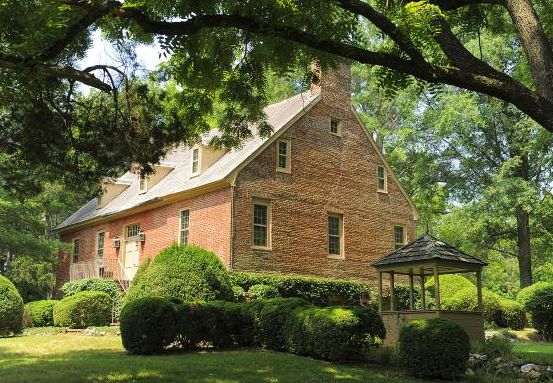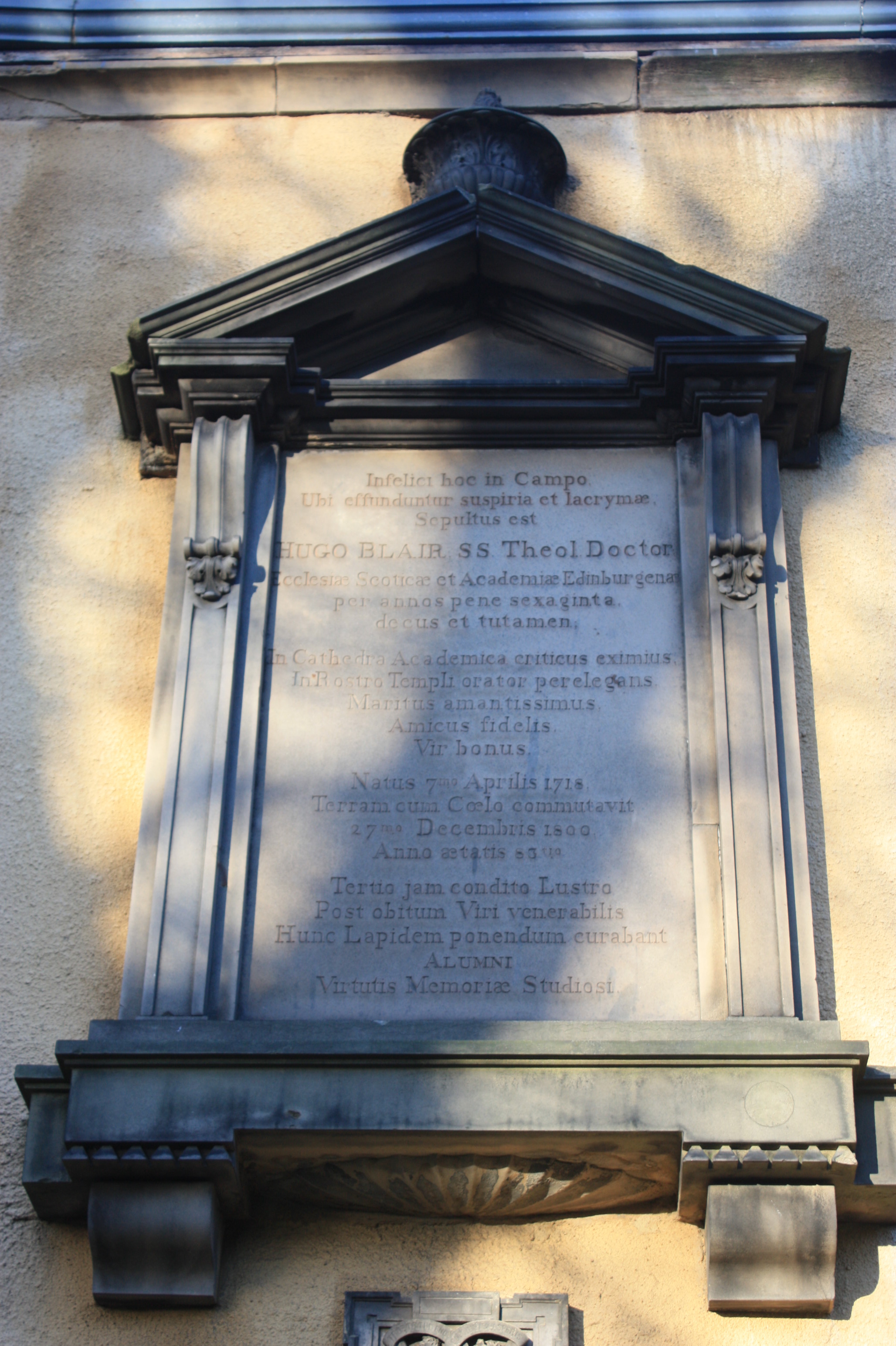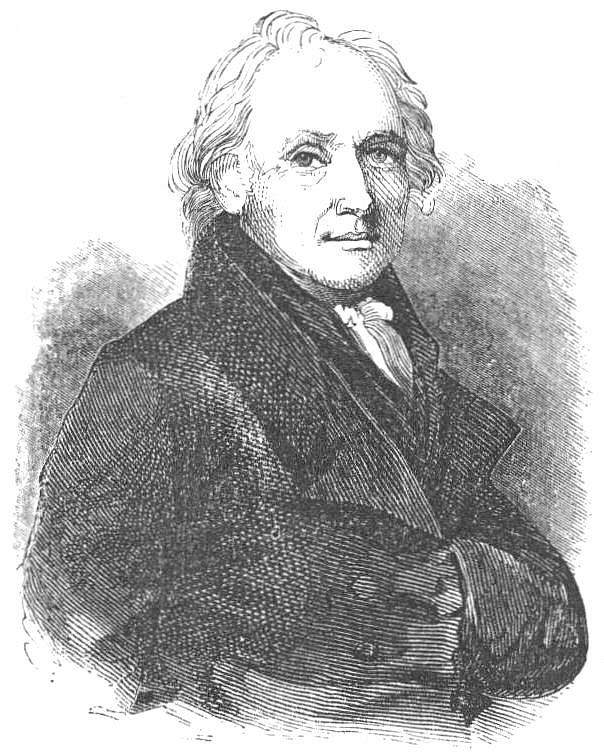|
Parson Weems
Mason Locke Weems (October 11, 1759 – May 23, 1825), usually referred to as Parson Weems, was an American minister, evangelical bookseller and author who wrote (and rewrote and republished) the first biography of George Washington immediately after his death. Some of the popular apocryphal stories about Washington can be traced to Weems, including the cherry tree tale ("I cannot tell a lie, I did it with my little hatchet"). That bestseller depicted Washington's virtues and was intended to provide a morally instructive tale for the youth of the young nation. Early life Mason Weems was born on October 11, 1759, in Anne Arundel County, Maryland, the youngest of nineteen children. His family traced their ancestry to Scotland. When he was ten years old, his parents sent him away to study at the Kent County Free School in Chestertown, Maryland (which later became Washington College). During the 1770s, Weems studied medicine in Edinburgh, then in the 1780s after a religious conversi ... [...More Info...] [...Related Items...] OR: [Wikipedia] [Google] [Baidu] |
Anne Arundel County, Maryland
Anne Arundel County (; ), also notated as AA or A.A. County, is located in the U.S. state of Maryland. As of the 2020 United States census, its population was 588,261, an increase of just under 10% since 2010. Its county seat is Annapolis, which is also the capital of the state. The county is named for Lady Anne Arundell (c. 1615/1616–1649), a member of the ancient family of Arundells in Cornwall, England, and the wife of Cecilius Calvert, 2nd Baron Baltimore (1605–1675), founder and first lord proprietor of the colony Province of Maryland. Anne Arundel County is included in the Baltimore–Columbia–Towson metropolitan statistical area, which is also included in the Washington–Baltimore–Arlington combined statistical area. History The county was named for Lady Anne Arundell, (1615/1616–1649), the daughter of Thomas Arundell, 1st Baron Arundell of Wardour, members of the ancient family of Arundells in Cornwall, England. She married Cecilius Calvert, second Lord ... [...More Info...] [...Related Items...] OR: [Wikipedia] [Google] [Baidu] |
All Hallows Church (South River, Maryland)
All Hallows Church, also known as The Brick Church, is a historic church located at 3604 Solomon's Island Road, in Edgewater, Anne Arundel County, Maryland, United States. Parish records date back to 1682, indicating that it existed prior to the Act of Establishment (1692) passed by the General Assembly of Maryland laying off the Province into 30 Anglican parishes. The church building is a low, rectangular Flemish bond brick structure with a hip roof. The building was constructed about 1710 as the parish church of All Hallows' or South River Parish, now called All Hallows Parish, South River. The interior was gutted by fire in 1727. It was modernized in 1825 and again in 1885. After a fire in 1940, reconstruction restored the building to its 1710 appearance. The ancient cemetery, shaded by a grove of oak trees, surrounds the church. It contains the graves of many local families. One is Provincial Justice, Deputy-Governor and Lord High Sheriff of Anne Arundel Colonel William B ... [...More Info...] [...Related Items...] OR: [Wikipedia] [Google] [Baidu] |
Hugh Blair
Hugh Blair FRSE (7 April 1718 – 27 December 1800) was a Scottish minister of religion, author and rhetorician, considered one of the first great theorists of written discourse. As a minister of the Church of Scotland, and occupant of the Chair of Rhetoric and Belles Lettres at the University of Edinburgh, Blair's teachings had a great impact in both the spiritual and the secular realms. Best known for ''Sermons'', a five volume endorsement of practical Christian morality, and ''Lectures on Rhetoric and Belles Lettres'', a prescriptive guide on composition (language), composition, Blair was a valuable part of the Scottish Enlightenment. Life Blair was born in Edinburgh into an educated Presbyterian family. His father was John Blair, an Edinburgh merchant. He was great-great-grandson of Rev. Robert Blair of St. Andrews and great nephew of Very Rev. David Blair (moderator), David Blair the Moderator of the General Assembly in 1700. From an early age it was clear that Blair, a ... [...More Info...] [...Related Items...] OR: [Wikipedia] [Google] [Baidu] |
Mount Vernon
Mount Vernon is an American landmark and former plantation of Founding Father, commander of the Continental Army in the Revolutionary War, and the first president of the United States George Washington and his wife, Martha. The estate is on the banks of the Potomac River in Fairfax County, Virginia. It is located south of Washington, D.C., and Alexandria, Virginia, and is across the river from Prince George's County, Maryland. The Washington family acquired land in the area in 1674. Around 1734, the family embarked on an expansion of its estate that continued under George Washington, who began leasing the estate in 1754 before becoming its sole owner in 1761. The mansion was built of wood in a loose Palladian style; the original house was built by George Washington's father Augustine, around 1734. George Washington expanded the house twice, once in the late 1750s and again in the 1770s. It remained Washington's home for the rest of his life. Following his death in 1799, und ... [...More Info...] [...Related Items...] OR: [Wikipedia] [Google] [Baidu] |
Augustine Washington
Augustine Washington Sr. (November 12, 1694 – April 12, 1743) was the father of the first U.S. president, George Washington. He served as an officer in the British Navy during the War of Jenkin's Ear although he belonged to the Colony of Virginia's landed gentry. Like his father and sons, Washington owned plantations which he operated by the use of enslaved labor, as well as speculated in less developed land and even operated an iron mine. Although Washington did not serve as a legislator (unlike his father and son), he held various offices in the counties in which he held land. Early and family life Augustine Washington was born in Westmoreland County, Virginia, on November 12, 1694, to Mildred Warner and her husband, Capt. Lawrence Washington, a militia captain and a member of the Virginia House of Burgesses. His paternal grandparents were Lt. Col. John Washington (c. 1631–1677) and his first wife, Anne Pope. His maternal grandparents owned Warner Hall and associated pl ... [...More Info...] [...Related Items...] OR: [Wikipedia] [Google] [Baidu] |
Lorton, Virginia
Lorton is a census-designated place (CDP) in Fairfax County, Virginia, United States. The population was 18,610 as of the 2010 census. History Lorton is named for a village in the Lake District National Park, Cumbria, in England. Joseph Plaskett of the Cumbrian village settled in southern Fairfax County, running a general store and opening the Lorton Valley Post Office on November 11, 1875. Before the identity of Lorton, the commercial center was Colchester, and the spiritual and historical center of the community around which the leading citizens of the time revolved was Pohick Church, where George Washington and George Mason were at times members of the vestry. From the early 20th century until November 2001, Lorton was the site of a District of Columbia correctional facility called the Lorton Reformatory which, among other things, detained approximately 168 women from the women's suffrage movement from the Washington, D.C. area from June to December 1917. For the 2010 census ... [...More Info...] [...Related Items...] OR: [Wikipedia] [Google] [Baidu] |
Truro Parish
Truro Parish was the ecclesiastical jurisdiction of the Religion in early Virginia#Anglican parishes, Anglican church in colonial Virginia with jurisdiction originally over all of Fairfax County, Virginia, Fairfax County. The parish had its central church at the Truro Church (Fairfax, Virginia), Truro Church and the parish was named for the parish in Truro in Cornwall. The parish was created on November 1, 1732 from Hamilton Parish, Virginia, Hamilton Parish. It was divided twice: in 1748, Cameron Parish, Virginia, Cameron Parish was formed and in 1764 Fairfax Parish, Virginia, Fairfax Parish was created. After 1765, Truro Parish covered southern Fairfax County until disestablishment ended the parish system by 1786. The parish in colonial Virginia The Anglican church was the established religion of the Colony of Virginia from 1619 - 1776. Each parish in the colony was ministered to by a single minister and governed by a vestry usually composed of 12 local men of wealth and standi ... [...More Info...] [...Related Items...] OR: [Wikipedia] [Google] [Baidu] |
Pohick Church
Pohick Church, previously known as Pohick Episcopal Church, is an Episcopal church in the community of Lorton in Fairfax County, Virginia, United States. Often called the "Mother Church of Northern Virginia," the church is notable for its association with important figures in early Virginian history such as George Washington and George Mason, both of whom served on its vestry. The present structure was completed in 1774 and underwent significant renovations beginning in 1874 and 1890. It is two stories tall with a hipped roof and modillioned cornice, with an interior of early Colonial Revival design. The church building was added to the Virginia Landmarks Register in 1968 and National Register of Historic Places in 1969. The church's archive includes the original vestry book of Truro Parish, dating to 1732; a 1761 prayer book imported by Washington; and the grave marker of Katherine Popkins, dated 1766, which is the lone surviving stone from the graveyard of the congregation' ... [...More Info...] [...Related Items...] OR: [Wikipedia] [Google] [Baidu] |
Weems–Botts Museum
Weems–Botts House Museum is a small historic museum in Dumfries, Virginia, United States. The museum includes the landmark Weems–Botts House on the corner of Duke Street and Cameron Street and the Weems–Botts Museum Annex, which houses the Lee Lansing Research Library and Archive, located at 3944 Cameron Street. Both buildings are located in Merchant Park. The park's bandstand commemorates William Grayson, one of Prince William County's most respected citizens and one of Virginia's first senators. The museum tour showcases the history of Dumfries, Virginia's oldest chartered town, and people associated with the house, including Mason Locke "Parson" Weems, and attorney Benjamin Botts. The museum was restored in 1975 as part of a bicentennial U.S. restoration project. The museum is owned by the Town of Dumfries and operated by Historic Dumfries Virginia, Inc., a non-profit organization. Historical significance The house originally served as the vestry for the Quantico Chu ... [...More Info...] [...Related Items...] OR: [Wikipedia] [Google] [Baidu] |
Dumfries, Virginia
Dumfries, officially the Town of Dumfries, is a town in Prince William County, Virginia. The population was 4,961 at the 2010 United States Census. Geography Dumfries is located at (38.567853, −77.324591). According to the United States Census Bureau, the town has a total area of 1.6 square miles (4.1 km2), all of it land. The town is situated 70 miles north of the state capital, Richmond. It is 30 miles south of central Washington, D.C. History The history of Dumfries began as early as 1690 when Richard Gibson erected a gristmill on Quantico Creek. A customhouse and warehouse followed in 1731, and many others cropped up along the estuary by 1732. The Town of Dumfries was formally established on of land at the head of the harbor of Quantico Creek, provided by John Graham. He named the town after his birthplace, Dumfries, Scotland. After much political maneuvering, the General Assembly established Dumfries as the first of seven townships in the county. Dumfr ... [...More Info...] [...Related Items...] OR: [Wikipedia] [Google] [Baidu] |
Jesse Ewell
Jesse may refer to: People and fictional characters * Jesse (biblical figure), father of David in the Bible. * Jesse (given name), including a list of people and fictional characters * Jesse (surname), a list of people Music * ''Jesse'' (album), a 2003 album by Jesse Powell * "Jesse", a 1973 song by Roberta Flack - see Roberta Flack discography * "Jesse", a song from the album ''Valotte'' by Julian Lennon * "Jesse", a song from the album ''The People Tree'' by Mother Earth * "Jesse" (Carly Simon song), a 1980 song * "Jesse", a song from the album ''The Drift'' by Scott Walker * "Jesse", a song from the album '' If I Were Your Woman'' by Stephanie Mills Other * ''Jesse'' (film), a 1988 American television film * ''Jesse'' (TV series), a sitcom starring Christina Applegate * ''Jesse'' (novel), a 1994 novel by Gary Soto * ''Jesse'' (picture book), a 1988 children's book by Tim Winton * Jesse, West Virginia, an unincorporated community * Jesse Hall, University of Missour ... [...More Info...] [...Related Items...] OR: [Wikipedia] [Google] [Baidu] |
Mathew Carey
Mathew Carey (January 28, 1760 – September 16, 1839) was an Irish-born American publisher and economist who lived and worked in Philadelphia, Pennsylvania. He was the father of economist Henry Charles Carey. Early life and education Carey was born in 1760 in Dublin into a middle-class Catholic family. He entered the bookselling and printing business in 1775 and, at the age of seventeen, published a pamphlet criticizing dueling. He followed this with a work criticizing the severity of the Irish penal code, and another criticizing Parliament. As a result, the British House of Commons threatened him with prosecution. In 1781 Carey fled to Paris as a political refugee. Adelman, 2013, p. 538 There he met Benjamin Franklin, the ambassador representing the American Revolutionary forces, which achieved independence that year. Franklin took Carey to work in his printing office. Carey worked for Franklin for a year before returning to Ireland, where he edited two Irish nationalist ... [...More Info...] [...Related Items...] OR: [Wikipedia] [Google] [Baidu] |







_002.jpg)